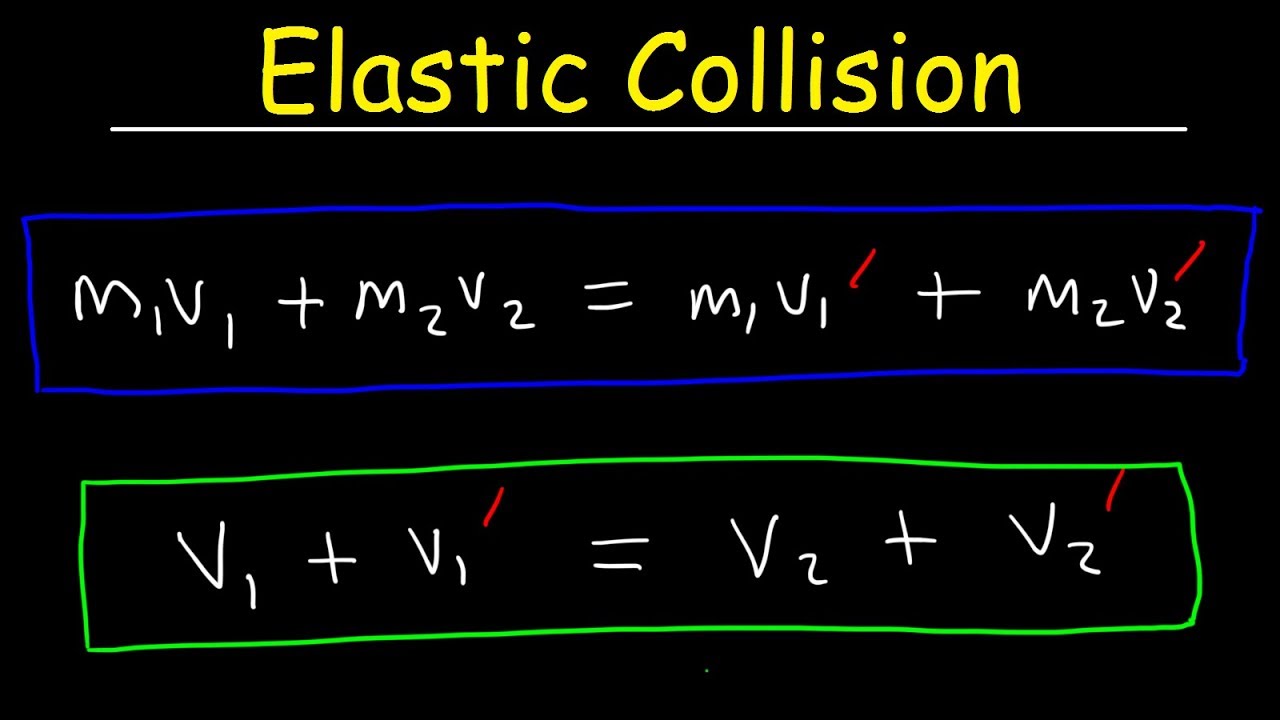
Elastic collisions are fascinating events where objects collide and bounce off each other without losing kinetic energy. These collisions are common in everyday life and have intriguing properties that make them a favorite topic in physics. But what exactly happens during an elastic collision? In simple terms, both momentum and kinetic energy are conserved. This means that the total energy before and after the collision remains the same. Think of it like two billiard balls striking each other and then moving away with the same speed they had before the impact. Understanding elastic collisions helps explain many natural and man-made phenomena, from car crashes to particle physics. Ready to dive into some cool facts? Let's get started!
Key Takeaways:
- Elastic collisions conserve both kinetic energy and momentum, making them ideal for studying motion and energy conservation in physics. Real-world applications include vehicle safety design and accurate sports shots.
- In contrast to inelastic collisions, elastic collisions are idealized scenarios commonly observed in gas molecules, billiard balls, and particle physics. Understanding their mathematical representation helps predict outcomes and analyze motion.
What is an Elastic Collision?
An elastic collision is a type of collision where the total kinetic energy and momentum are conserved. These collisions are common in physics and can be observed in various scenarios, from atomic particles to everyday objects.
- In an elastic collision, both kinetic energy and momentum remain constant before and after the collision.
- Elastic collisions are idealized scenarios; real-world collisions often involve some energy loss.
- Billiard balls provide a good example of nearly elastic collisions.
- In physics, elastic collisions are often studied to understand fundamental principles of motion and energy conservation.
Examples of Elastic Collisions
Elastic collisions can be seen in many places, both in nature and in controlled environments. Here are some fascinating examples:
- Gas molecules in a container frequently undergo elastic collisions.
- Newton's cradle, a popular desk toy, demonstrates elastic collisions with swinging spheres.
- In particle physics, elastic collisions occur between subatomic particles like protons and neutrons.
- Rubber balls bouncing off hard surfaces exhibit nearly elastic collisions.
Mathematical Representation
Understanding the math behind elastic collisions helps in predicting outcomes and analyzing motion.
- The formula for momentum conservation in elastic collisions is: ( m_1v_1 + m_2v_2 = m_1v_1' + m_2v_2' ).
- Kinetic energy conservation is represented by: ( frac{1}{2}m_1v_1^2 + frac{1}{2}m_2v_2^2 = frac{1}{2}m_1v_1'^2 + frac{1}{2}m_2v_2'^2 ).
- Solving these equations simultaneously can determine the final velocities of colliding objects.
- Elastic collision equations assume no external forces act on the system during the collision.
Real-World Applications
Elastic collisions have practical applications in various fields, from engineering to sports.
- Engineers use principles of elastic collisions to design safer vehicles.
- Sports like pool and snooker rely on understanding elastic collisions for accurate shots.
- In space missions, elastic collision principles help in docking spacecraft.
- Robotics often use elastic collision models to simulate and predict interactions between moving parts.
Differences Between Elastic and Inelastic Collisions
It's important to distinguish between elastic and inelastic collisions, as they behave differently.
- In inelastic collisions, kinetic energy is not conserved, though momentum is.
- Inelastic collisions often result in objects sticking together or deforming.
- Car crashes are typically inelastic, with significant energy loss as heat and sound.
- Elastic collisions are idealized, while inelastic collisions are more common in everyday life.
Historical Context
The study of elastic collisions has a rich history, contributing to the development of classical mechanics.
- Sir Isaac Newton's work laid the foundation for understanding elastic collisions.
- The concept of elastic collisions dates back to the 17th century.
- Early experiments with pendulums helped illustrate principles of elastic collisions.
- The development of kinetic theory in the 19th century furthered the understanding of gas molecule collisions.
Modern Research and Developments
Research on elastic collisions continues to evolve, with new discoveries and applications emerging.
- Modern particle accelerators study elastic collisions at subatomic levels.
- Advances in computer simulations allow for more accurate modeling of elastic collisions.
- Research in materials science explores how different materials respond to elastic collisions.
- Elastic collision principles are applied in developing new technologies, such as energy-efficient materials and impact-resistant devices.
Elastic Collisions: The Final Word
Elastic collisions are fascinating. They show how energy and momentum work together. In these collisions, objects bounce off each other without losing energy. This makes them different from inelastic collisions, where some energy turns into heat or sound.
Understanding elastic collisions helps in many fields. Physicists study them to learn about particle interactions. Engineers use this knowledge to design safer cars. Even sports rely on these principles. Think about how a basketball bounces or how billiard balls scatter.
Remember, in an elastic collision, both kinetic energy and momentum stay the same. This is a key point. It helps predict the outcome of collisions. Whether you're a student, a scientist, or just curious, knowing about elastic collisions can be very useful. They are more than just a concept; they are a part of everyday life.
Frequently Asked Questions
Was this page helpful?
Our commitment to delivering trustworthy and engaging content is at the heart of what we do. Each fact on our site is contributed by real users like you, bringing a wealth of diverse insights and information. To ensure the highest standards of accuracy and reliability, our dedicated editors meticulously review each submission. This process guarantees that the facts we share are not only fascinating but also credible. Trust in our commitment to quality and authenticity as you explore and learn with us.
